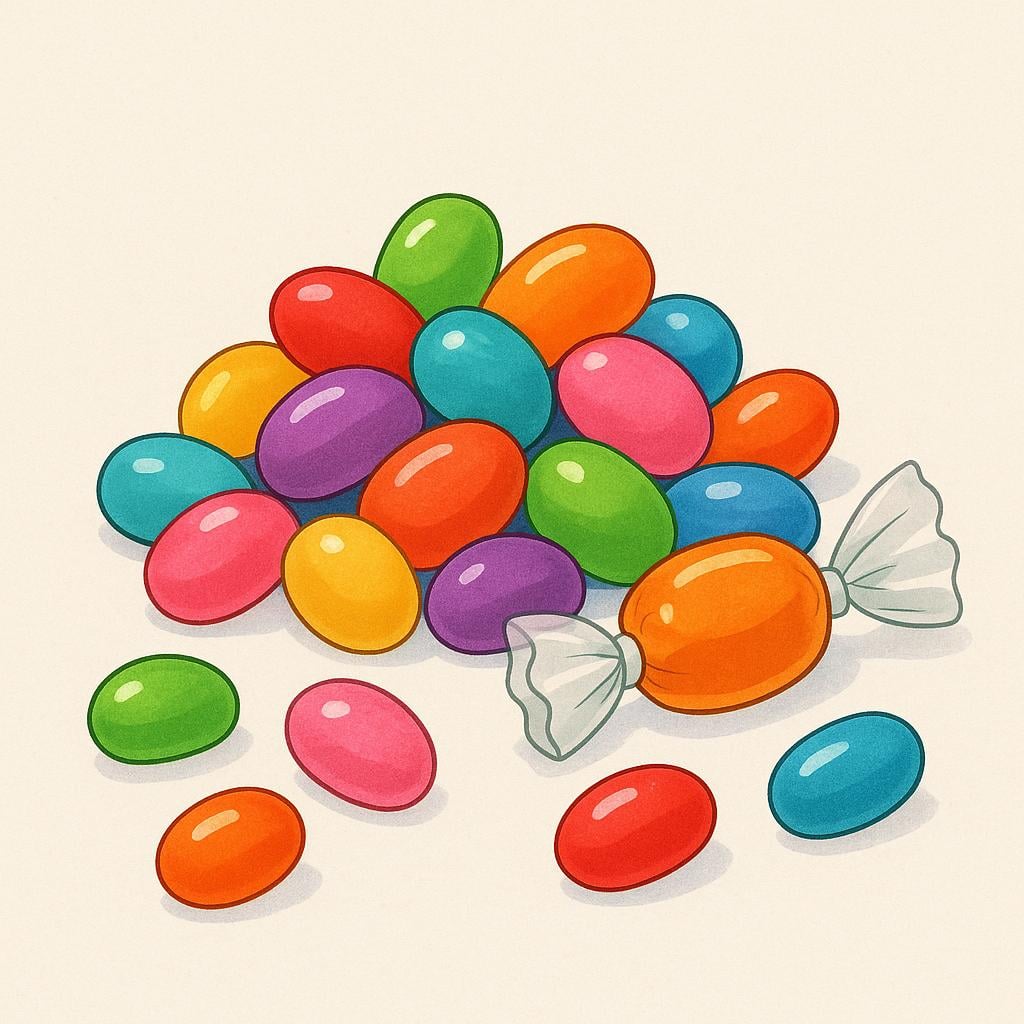dulce
/DOOL-seh/
sweet

Adjective: Dulce (Sweet). The strawberry, sweetened with sugar, clearly illustrates the primary meaning of 'sweet' relating to taste.
dulce(Adjective)
sweet
?Describing taste, like sugar
gentle
?Describing a person's personality
,soft
?Describing a sound or voice
,fresh
?Used in the phrase 'agua dulce' for freshwater
📝 In Action
El café está demasiado dulce para mí.
A1The coffee is too sweet for me.
Mi abuela es una mujer muy dulce y amable.
A2My grandmother is a very sweet and kind woman.
Los peces de agua dulce viven en ríos y lagos.
B1Freshwater fish live in rivers and lakes.
💡 Grammar Points
Adjectives That Don't Change
Adjectives that end in '-e', like 'dulce', are super easy! They don't change for masculine or feminine things. It's 'el pastel dulce' (masculine) and 'la fresa dulce' (feminine).
❌ Common Pitfalls
Don't Add an '-a' for Feminine
Mistake: "La manzana es dulca."
Correction: La manzana es dulce. Because 'dulce' ends in '-e', it stays the same for both masculine and feminine things.
⭐ Usage Tips
Not Just for Food
You can use 'dulce' to describe more than just taste. It's often used for a kind person ('una persona dulce') or a soft, pleasant sound ('una voz dulce').
Freshwater vs. Saltwater
A very important and fixed phrase is 'agua dulce,' which means freshwater (from a river or lake). This is the opposite of 'agua salada' (saltwater from the ocean).

Noun: Dulce (Candy / Sweet). When used as a noun, dulce refers to a piece of candy or a sweet treat.
dulce(Noun)
candy
?A single piece of candy or candy in general
,sweet
?A sweet treat (common in UK English)
dessert
?The sweet course of a meal
,jam / preserve
?A type of sweet fruit spread, e.g., 'dulce de leche'
📝 In Action
Mi hijo comió demasiados dulces en la fiesta.
A2My son ate too much candy at the party.
¿Qué hay de dulce hoy?
B1What's for dessert today?
El dulce de leche es muy popular en Argentina.
B1Dulce de leche (a caramel-like spread) is very popular in Argentina.
💡 Grammar Points
Always Masculine
Even though it ends in '-e', when 'dulce' is used as a noun for candy, it's always masculine. So you say 'el dulce' (the candy) or 'los dulces' (the candies).
❌ Common Pitfalls
'Dulce' vs. 'Postre'
Mistake: "Saying 'Quiero un dulce' when you mean the dessert course on a menu."
Correction: It's better to ask '¿Qué hay de postre?'. While 'dulce' can mean dessert, 'postre' is more specific for the final course of a meal. 'Un dulce' usually means a single piece of candy.
⭐ Usage Tips
Plural for 'Candy'
The most common way to talk about candy in general is by using the plural form, 'los dulces'. For example, 'Me encantan los dulces' (I love candy).
✏️ Quick Practice
💡 Quick Quiz: dulce
Question 1 of 2
Which sentence correctly uses 'dulce' to describe a person?
📚 More Resources
Frequently Asked Questions
Why is it 'el dulce' (masculine) if it ends in '-e'?
That's a great question! While many nouns ending in '-e' are masculine, there isn't a perfect rule. You just have to learn them. 'Dulce' as a noun for candy is one you just remember as masculine: 'el dulce' and 'los dulces'.
How do I know if 'dulce' means 'sweet' (adjective) or 'candy' (noun)?
You can tell by how it's used in the sentence. If it's describing something (like 'el café dulce'), it's an adjective. If it has 'el', 'un', or is plural ('los dulces'), it's almost always the noun meaning 'candy'.